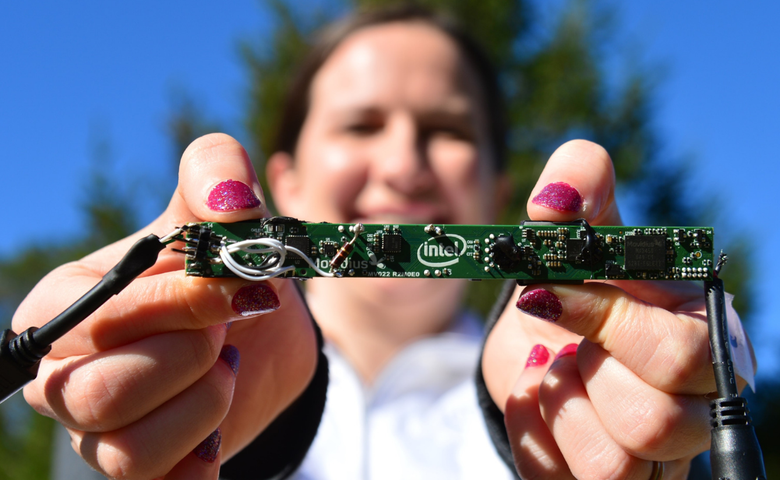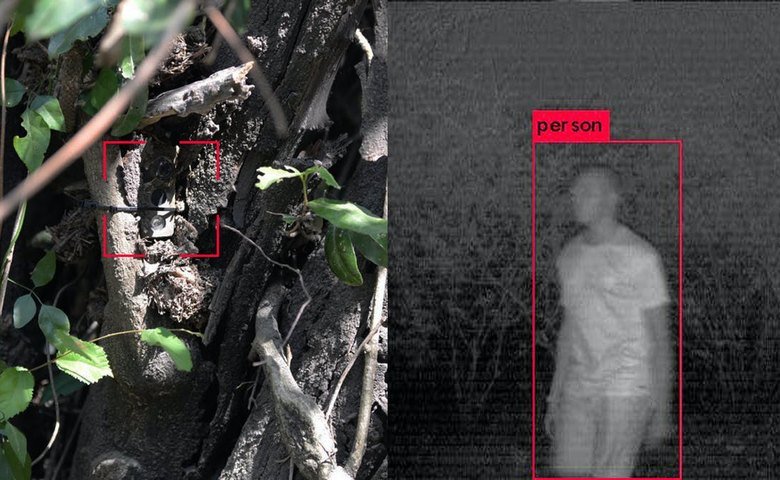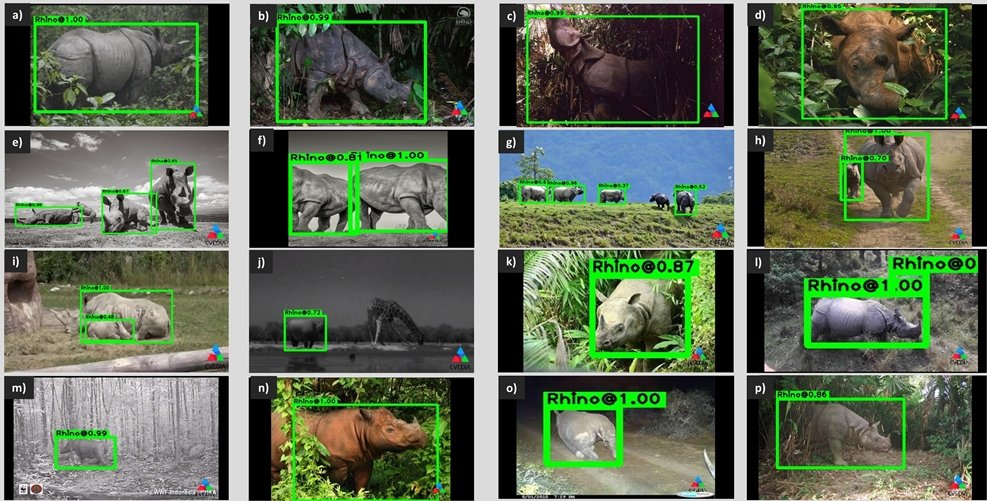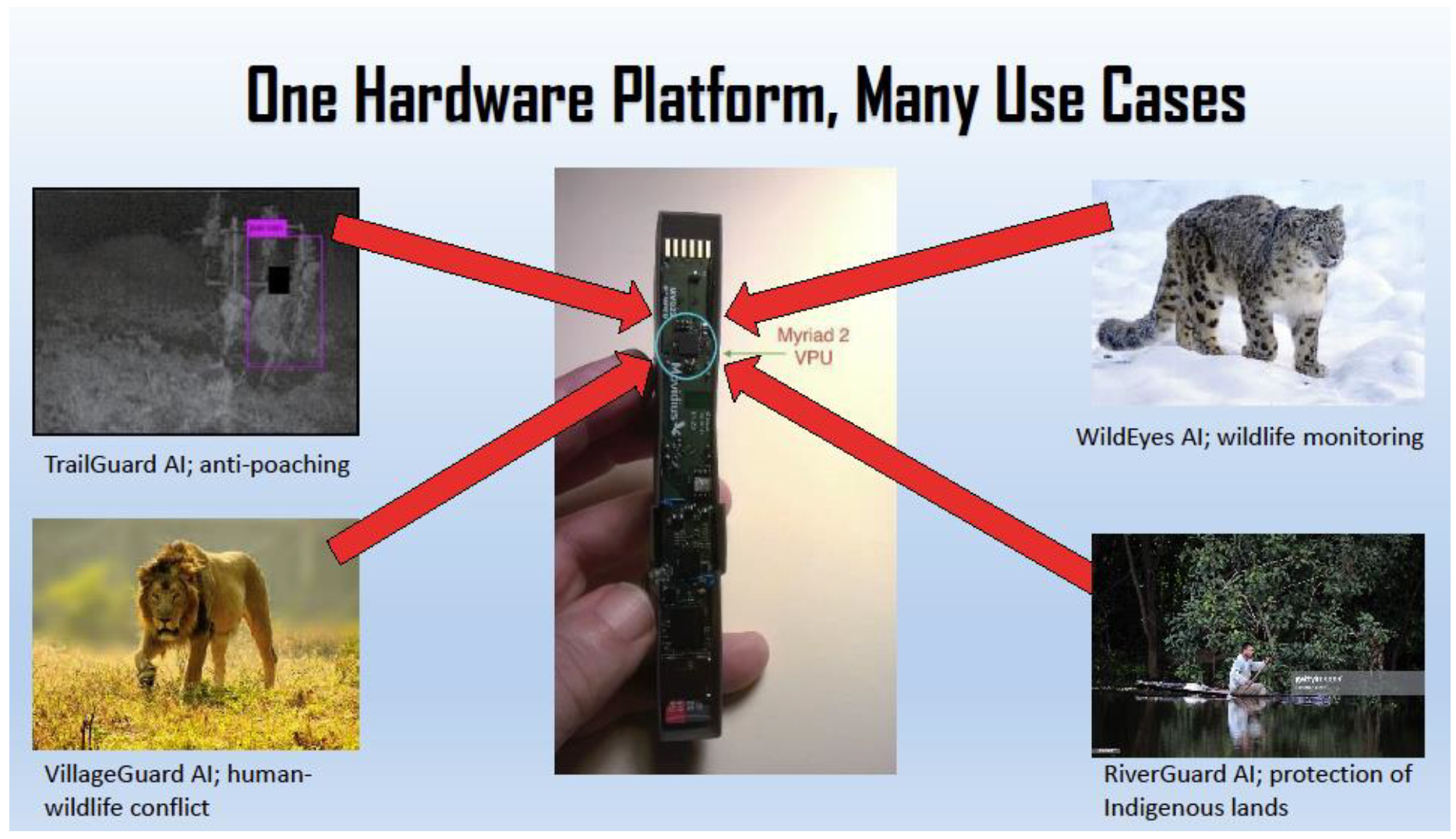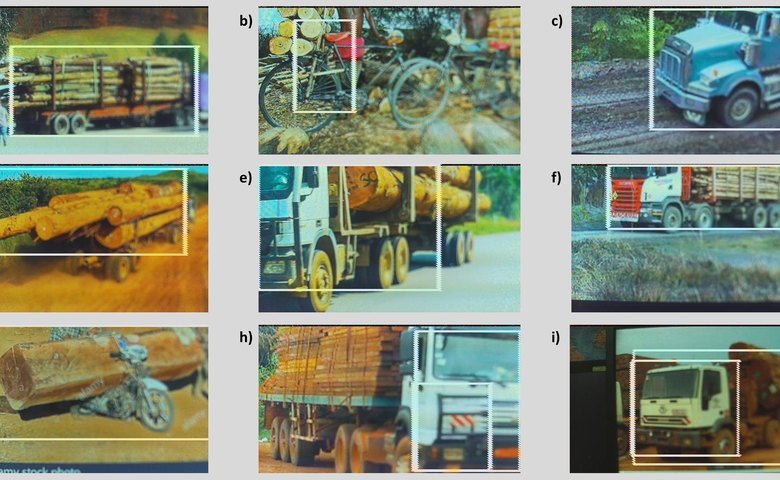
Tech for Parks:
Trailguard AI
Global Conservation is funding the TrailGuard AI, a revolutionary next-generation cellular trail camera that will help protect against human-wildlife conflict and illegal activities like poaching and logging.
Created by the environmental organization RESOLVE and software developer CVEDIA, TrailGuard is a very small camera embedded with a processing chip that automatically detects and alerts managers to people, vehicles, and wildlife. Eric Dinerstein, a conservation biologist with RESOLVE and a Global Conservation Advisory Board Member, has been instrumental in developing this new technology.
The TrailGuard revolutionizes trail cameras in several ways:
1. Its on-board artificial intelligence can be trained to recognize people, vehicles like logging trucks, and specific wildlife species, even in the dark, without an internet connection. When triggered, the AI system captures four images, which are analyzed and stored on the SD card. Images containing positively identified people, vehicles, or wildlife will be sent as an alert in under two minutes to a designated cell phone or computer via 2G mobile networks or as a long-range radio signal. Thanks to a partnership with mobile satellite communications firm Inmarsat, TrailGuard can also transmit images via mobile BGAN terminals where mobile networks are scarce; the cost of data transmission will be US$15-20 per month. With these near-real-time alerts, rangers can intercept poachers before they have the chance to kill an animal. While 75% of images from standard trail cameras are false triggers, the TrailGuard AI is able to filter out irrelevant images, eliminating false alarms and extending battery life. RESOLVE and CVEDIA are now working to train the AI to detect intruders in uniforms, to identify the weapons they carry, and even re-identify suspects for use in prosecution. Further, TrailGuard AI can be integrated with EarthRanger. The more information, the better – detailed intel can help save rangers’ lives, as they can better prepare when intercepting criminals. Advance warning technology like TrailGuard can help prevent tragedies such as the April 2020 attack in Virunga National Park, DRC, where 12 rangers were killed in an ambush.
2. TrailGuard is incredibly small – the head of the camera, along with the passive infrared sensor, is only about the size of a person’s index finger. It is attached by a cable to the battery box and communications unit. That way, when the camera head is mounted and surrounded with a little bit of bark or elephant dung, it becomes virtually invisible. The battery box can then be completely hidden, and the cable is designed to look like a vine. To assist even further in its concealment, the camera has a narrower field of view and faster wake-up time than traditional trail cameras, allowing it to be mounted farther away (3-5m) from the trail that is being monitored. Further, with its military-grade AI, TrailGuard can accurately detect humans regardless of the angle of the sensor to the trail. This means that cameras can be placed high in a tree, or even directly over a trail, enhancing concealment (and connectivity). Keeping trail cameras well-hidden is crucial for preventing criminals from avoiding them, as well as protecting the cameras from vandals or thieves. Some studies have shown that 42% of traditional trail cameras are vandalized or stolen within their first year of deployment.
3. The TrailGuard can operate for 1.5 years on a single rechargeable battery, rather than two months like most other trail cameras. This avoids calling attention to the location of the camera trap when managers have to change batteries, and reduces the amount of time needed for camera maintenance.
TrailGuard AI in Action
In the Himalaya, TrailGuard is currently being used with a species recognition AI, called WildEyes AI, to detect snow leopards, Tibetan wolves, and brown bears that prey on livestock. When one of these predators is detected, speakers and strobe lights can be triggered to frighten them off before they can kill livestock or endanger villagers. These systems not only protect the livelihoods of Himalayan communities, but also protect these threatened predators from retaliation.
WildEyes is also guarding communities in Thailand from elephants, which enter villages to raid crops and can occasionally kill villagers. The elephants are often killed in retaliation. Human-elephant conflict is common wherever elephants occur; they cause over US$10 million in crop and property damage each year in Sri Lanka, and damaged $600,000 worth of crops in Tanzania in 2019. TrailGuard could potentially replace more expensive and time-consuming methods that are being used currently, like building fences or radio-collaring animals.
Global Conservation Board Member Eric Dinerstein applying a coating to the camera head. RESOLVE manufactured the first 300 TrailGuard AI units by hand. This process has now been outsourced so that TrailGuard can be produced at scale, allowing RESOLVE to distribute the units to protected areas around the world at a price that is affordable for parks with limited funds. Photo courtesy Eric Dinerstein/RESOLVE.
Most recently, RESOLVE announced that WildEyes is being rolled out to protect rhinos from poachers. With the WildEyes AI Rhino Detector, managers can monitor the recovery of any of the five rhino species. Because of the body shape of rhinos, it is difficult to fit them with radio tracking collars, making them difficult to monitor. A network of cameras running WildEyes AI can help with this. Since rhinos can be identified individually by a combination of horn size and shape, scars, and skin fold patterns, WildEyes AI will eventually be able to use a re-identification algorithm to monitor individual rhinos and more accurately estimate population sizes.
RESOLVE is developing a number of other AI models, including boat traffic monitoring for the protection of indigenous lands (RiverGuard AI), detection of illegal timber transport (ForestGuard AI), and early wildfire detection (FireGuard AI). The next generation of TrailGuard AI unites will also contain built-in stereo microphones to allow for acoustic monitoring (WildEars AI).
Once commercially available, TrailGuard with WildEyes AI will start at $450 but will eventually become cheaper. RESOLVE aims to deploy TrailGuard AI in 100 parks by 2021. We at Global Conservation are making TrailGuard a core component of Global Park Defense, helping RESOLVE to achieve that goal.

